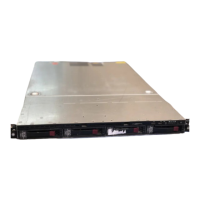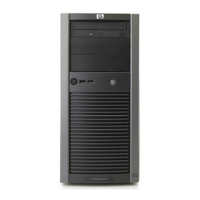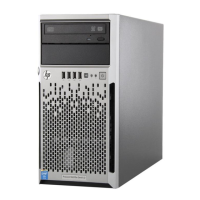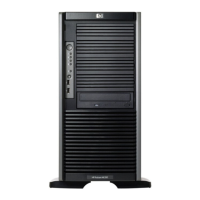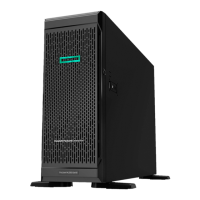Software and configuration utilities 53
• Remains available any time that the server is on
• Displays on-screen tips for individual steps of a configuration procedure
• Beginning with ACU version 8.28.13.0, provides diagnostic functionality on the Diagnostics tab
(formerly known as Array Diagnostics Utility).
For optimum performance, the minimum display settings are 1024 × 768 resolution and 16-bit color. Servers
running Microsoft® operating systems require one of the following supported browsers:
• Internet Explorer 6.0 or later
• Mozilla Firefox 2.0 or later
For Linux servers, see the README.TXT file for additional browser and support information.
For more information about the controller and its features, see the HP Smart Array Controllers for HP ProLiant
Servers User Guide on the HP website (http://www.hp.com/support/SAC_UG_ProLiantServers_en). To
configure arrays, see the Configuring Arrays on HP Smart Array Controllers Reference Guide on the HP
website (http://www.hp.com/support/CASAC_RG_en).
Embedded SATA RAID
HP provides the SATA RAID feature through use of the HP Storage Manager. This feature enables RAID
functionality (RAID 0, RAID 1, or RAID 10) for the embedded SATA controller in the system.
Required hardware
Installing the SATA RAID driver may require a diskette drive and CD-ROM drive. Some servers do not ship
with these drives as standard hardware.
NOTE: Systems with Microsoft® Windows Server® 2003 and HP embedded drivers do not
require additional hardware.
Diskette and CD-ROM drive options
To acquire a diskette drive option or CD-ROM drive option for a server, contact an HP authorized reseller.
For the name of the nearest HP authorized reseller:
• In the United States, call 1-800-345-1518.
• In Canada, call 1-800-263-5868.
• In other locations, refer to the HP website (http://www.hp.com).
USB diskette and CD-ROM drives
For driver installation purposes, a USB diskette drive and USB CD-ROM drive are sufficient.
NOTE: To use a USB drive key in place of the diskette drive, see "Using a USB drive key as a
virtual driver diskette (on page 59)."
HP provides both standard USB 2.0 support and legacy USB 2.0 support. Standard support is provided by
the OS through the appropriate USB device drivers. Before the OS loads, HP provides support for USB
devices through legacy USB support, which is enabled by default in the system ROM.
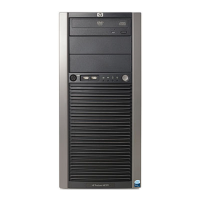
